Nebuchadnezzar II – Greatest Ruler Of Ancient Babylonia And Conqueror Of Judah
David Tee - AncientPages.com - All great rulers had to have a beginning and Nebuchadnezzar II was no exception to this rule. He was born in 634 BC to Nabopolassar, a general in the Assyrian army.
Two factors played a large role in Nebuchadnezzar’s early life. First, the Assyrians were weak after expanding too far. Second, his father wanted to restore the Babylon nation and make it into an empire.
King Nebuchadnezzar dreams of a great statue. Daniel before King Nebuchadnezzar, interpreting his dream. Image credit: Rijksmuseum - CC0 1.0
These factors gave Nebuchadnezzar the education that would turn him into a strong ruler. His father battled the Assyrians for approx. 10 years whittling away their territory as he waited for his son to become an adult and a capable general.
Even the Babylonian Chronicles (known as the series of tablets recording major events in Babylonian history) do not provide much detail concerning his early years. What is known is that Nebuchadnezzar II’s father strengthened his ties with the Medes, one of many Assyrian enemies by marrying his son to the daughter of Cyaxares the Mede ruler.
Nebuchadnezzar II After His Father’s Death
It was when his father was putting the finishing touches on the defeat of that Nebuchadnezzar II finally came on his own. As the Egyptian army approached to protect their Assyrian ally, Nebuchadnezzar II met them at Carchemish and destroyed the Egyptian army.
Nabopolassar, king of Babylon ruled from 626-to 605. 626-605 BC. Image source
This was to be his father’s last campaign. As the Assyrians and their capital Nineveh lay in ruins, Nabopolassar died in Babylon. In the year 605 BC Nebuchadnezzar ascended the throne and continued his father’s dream of making Babylon great again.
King Nebuchadnezzar II’s Rule Was Not All About War
Nebuchadnezzar II is well known from the Bible as the Babylonian King who conquered Judah when its King, Jehoiakim, revolted in 597 BC. This conquest led to the removal of many the Jewish citizens who occupied Jerusalem and other Judean cities.
Also, Nebuchadnezzar II expanded the Babylonian territory and to have complete rule he needed to conquer and destroy Tyre. He accomplished this feat in 585 BC. Once this city fell Nebuchadnezzar II was able to consolidate his power and rule his territory without too many issues. Although Judah remained rebellious to about 582 BC.
Detail of a terracotta cylinder of Nebuchadnezzar II, recording the building and reconstruction works at Babylon. 604–562 BC. From Babylon, Iraq, housed in the British Museum. Credit: Public Domain
Yet, war and conquering foes is not all that Nebuchadnezzar was famous for. He was also a great builder. His construction projects were so famous and spectacular that they were the envy of the known world. Also, his own people came to believe that Babylon was the center of the earth.
Imago Mundi, an ancient Babylonian world map uncovered some time ago shows this attitude as the world is placed around the nation of Babylon. One of his more famous building projects was, of course, the infamous hanging gardens of Babylon. Another was his blue colored Ishtar Gate, which so impressed ancient writers that there were complaints when it was left off the 7 Wonders of the Ancient World list.
Did The Hanging Gardens Of Babylon Really Exist?
Even though this architectural achievement was recorded on the 7 Wonders of the Ancient World list, there are some scholars who contest its existence and wonder why it was included.
Their opposition to the inclusion comes from the fact that Nebuchadnezzar himself did not mention the gardens in his own writings. The inscription is called the East India House Inscription but the work of praise by Nebuchadnezzar does not include any referral to the great gardens.
There are reasons for this. It is possible that Nebuchadnezzar II had either not started the project, or it was just in the early stages of construction. It is hard to say why it was left out. But it was not left out of the Bibliotheca Historica, Book II.10 written by Diodorus Siculus who lived between 90 and 30 BC.
The problem with that mention is that Siculus may have been talking about Assyrian Kings and a garden in Nineveh not Babylon nor Nebuchadnezzar II. It could be that Siculus simply made a mistake when he wrote his location description.
Nebuchadnezzar II Died Peacefully
Nebuchadnezzar II may have been a bit ahead of his time. Women enjoyed certain equality with men. Babylon's education and other important institutes flourished as did his empire.
It is a good legacy for a King to leave behind. Nebuchadnezzar died peacefully in his capital city, one he tried to make the center of the world.
Written by – David Tee - AncientPages.com Staff Writer
Copyright © AncientPages.com All rights reserved. This material may not be published, broadcast, rewritten or redistributed in whole or part without the express written permission of AncientPages.com
Expand for referencesThomas Nelson Publishers. (1996). Nelson’s complete book of Bible maps & charts: Old and New Testaments (Rev. and updated ed.). Nashville, TN: Thomas Nelson.
Snearly, M. (2016). Euphrates River. In J. D. Barry, D. Bomar, D. R. Brown, R. Klippenstein, D. Mangum, C. Sinclair Wolcott, … W. Widder (Eds.), The Lexham Bible Dictionary. Bellingham, WA: Lexham Press.
Wilson, C.A., “Nebuchadnezzar The Great Builder” (1972). Bible and Spade, 1(1), 9.
More From Ancient Pages
-
 Curious Historical Observation Of A Bronze Age Warrior Who Shouldn’t Exist
Featured Stories | May 21, 2019
Curious Historical Observation Of A Bronze Age Warrior Who Shouldn’t Exist
Featured Stories | May 21, 2019 -
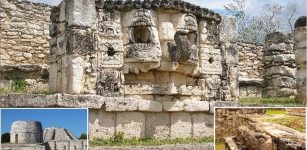 Rise Of League Of Mayapán And The Last Great Maya Capital
Featured Stories | Aug 23, 2017
Rise Of League Of Mayapán And The Last Great Maya Capital
Featured Stories | Aug 23, 2017 -
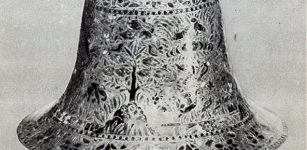 Enigma Of Ancient Bell-Shaped Metal Vase Found In Solid Sedimentary Rock
Artifacts | Jun 6, 2019
Enigma Of Ancient Bell-Shaped Metal Vase Found In Solid Sedimentary Rock
Artifacts | Jun 6, 2019 -
 Genetic Links Between Traits Are Often Overstated – UCLA Study
Archaeology | Nov 28, 2022
Genetic Links Between Traits Are Often Overstated – UCLA Study
Archaeology | Nov 28, 2022 -
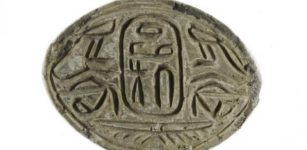 Hyksos: 15th Dynasty Rulers Of Ancient Egypt, Were An Internal Takeover
Archaeology | Jul 15, 2020
Hyksos: 15th Dynasty Rulers Of Ancient Egypt, Were An Internal Takeover
Archaeology | Jul 15, 2020 -
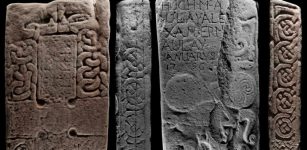 Rare Lost Pictish Stone With Strange Mythical Beasts Goes On Display For The First Time
Artifacts | Dec 12, 2020
Rare Lost Pictish Stone With Strange Mythical Beasts Goes On Display For The First Time
Artifacts | Dec 12, 2020 -
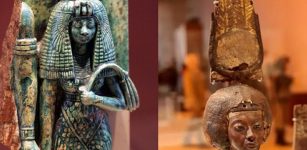 Life And Legacy Of Queen Tiye, Mother Of Akhenaten – Was She Egyptian Or Nubian?
Featured Stories | Jul 20, 2018
Life And Legacy Of Queen Tiye, Mother Of Akhenaten – Was She Egyptian Or Nubian?
Featured Stories | Jul 20, 2018 -
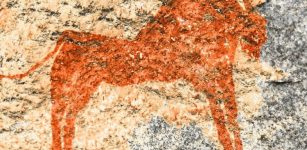 Great research of Polish archaeologist working at rock art site in Kondoa, Tanzania
News | Aug 26, 2015
Great research of Polish archaeologist working at rock art site in Kondoa, Tanzania
News | Aug 26, 2015 -
 Genes For Learning And Memory Are 650 Million Years Old – Study Shows
Evolution | Jul 19, 2023
Genes For Learning And Memory Are 650 Million Years Old – Study Shows
Evolution | Jul 19, 2023 -
 Englishmen Jailed For Stealing Rare Viking Hoard Worth Millions
Archaeology | Dec 1, 2019
Englishmen Jailed For Stealing Rare Viking Hoard Worth Millions
Archaeology | Dec 1, 2019 -
 Why Did Ancient Humans Have Same Sense Of Smell, But Different Sensitivities?
Archaeology | Jan 6, 2023
Why Did Ancient Humans Have Same Sense Of Smell, But Different Sensitivities?
Archaeology | Jan 6, 2023 -
 Ancient Indian Sages Had Highly Advanced Scientific Knowledge Thousands Of Years Ago
Ancient Technology | Mar 18, 2019
Ancient Indian Sages Had Highly Advanced Scientific Knowledge Thousands Of Years Ago
Ancient Technology | Mar 18, 2019 -
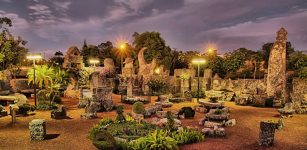 Coral Castle Is Among Most Fascinating And Mysterious Buildings In Florida
Featured Stories | Sep 17, 2018
Coral Castle Is Among Most Fascinating And Mysterious Buildings In Florida
Featured Stories | Sep 17, 2018 -
 12 Ancient Myths, Legends And Biblical Stories Confirmed By Modern Science
Featured Stories | Apr 22, 2017
12 Ancient Myths, Legends And Biblical Stories Confirmed By Modern Science
Featured Stories | Apr 22, 2017 -
 Mystery Of The Knights Templar – Did A Secret Ancient Meeting Determine The Real Purpose Of The Christian Knights? Part 1
Featured Stories | Aug 20, 2019
Mystery Of The Knights Templar – Did A Secret Ancient Meeting Determine The Real Purpose Of The Christian Knights? Part 1
Featured Stories | Aug 20, 2019 -
 Aillén Mac Midgna: Evil Goblin Who Terrorized Sacred Hill Of Tara
Celtic Mythology | Mar 28, 2023
Aillén Mac Midgna: Evil Goblin Who Terrorized Sacred Hill Of Tara
Celtic Mythology | Mar 28, 2023 -
 X-Rays Reveal Secret From Da Vinci’s Masterpiece Mona Lisa
News | Oct 14, 2023
X-Rays Reveal Secret From Da Vinci’s Masterpiece Mona Lisa
News | Oct 14, 2023 -
 Legend Of Brigadoon: Mythical Village Where Time Stands Still
Featured Stories | Nov 2, 2016
Legend Of Brigadoon: Mythical Village Where Time Stands Still
Featured Stories | Nov 2, 2016 -
 What Is The Codex Sinaiticus And What Does It Mean?
Ancient History Facts | Feb 5, 2019
What Is The Codex Sinaiticus And What Does It Mean?
Ancient History Facts | Feb 5, 2019 -
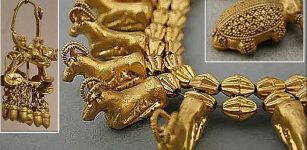 Gold Treasures From The Land Of Ancient Colchian Culture In Georgia
Featured Stories | Dec 19, 2023
Gold Treasures From The Land Of Ancient Colchian Culture In Georgia
Featured Stories | Dec 19, 2023



